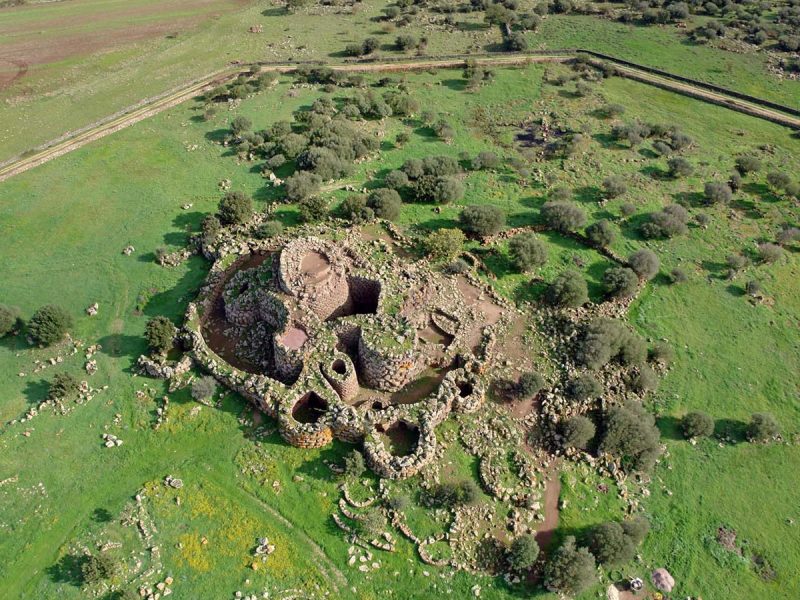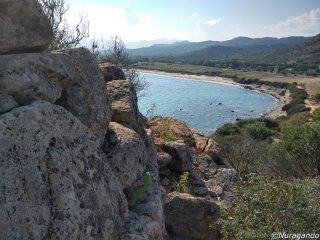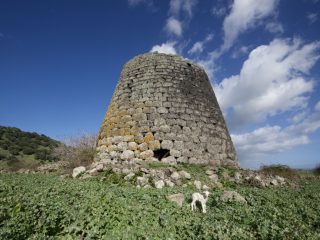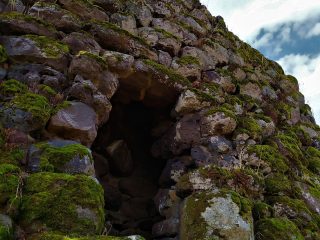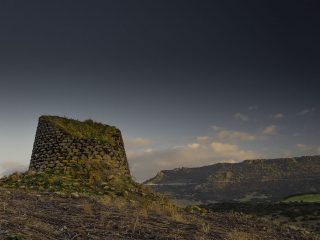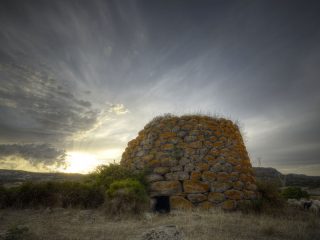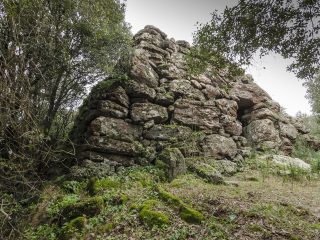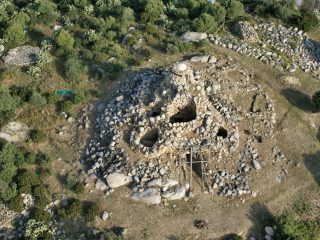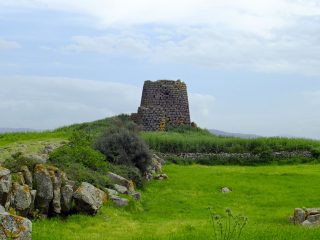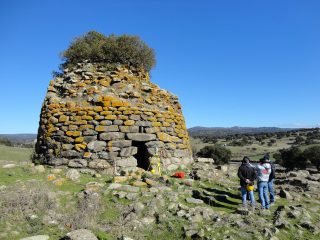The Nuraghe Arrubiu sits at the centre of the basaltic plateau of Pran ‘e Muru, dominating the area below. Its typical red colour, from where the name “Arrubiu” originates, is caused by the shades of lichen which almost completely cover it.
The construction of the complex dates to the period around the XIV century B.C. Fragments of a Mycenaean vase were found under the floor in the central tower.
It was then abandoned around the IX century B.C. due to a collapse which caused the destruction of the upper part of the stronghold.
It has a central tower surrounded by an imposing five-tower stronghold. The stronghold is, in turn, surrounded by a second wall enclosure, the defence wall, with seven towers and three courtyards.
Today, only the first of the original three floors in the central tower remains. Compared to its original 30 metres, 15 metres of it is still standing. In the central chamber, the false cupola (tholos) is still intact.
The excavation work carried out on the Nuraghe started in 1981 and revealed extremely interesting data regarding its usage, and in more general terms, the lifestyle of the Nuragic people who built and used it.
Traces of a channel to drain the rainwater and a cistern that collected it is still visible in one of the courtyards, the central B courtyard.
The presence of a bench, a fireplace, a basin, the remains of a meal and dishes in the same courtyard gives us the impression that it was used for eating communal meals. Furthermore, in the stronghold’s C tower, the discovery of two cooking plates, a fireplace, artifacts linked to the preparation of bread and carbonised fragments of bread revealed that it was a laboratory for bread making.
The village stood in the surrounding area mainly consisting of circular huts. These included one which was particularly large with seating and fireplace and was probably the hut used for meetings.
The Romans re-populated the area in the II century B.C. On the top of the Nuraghe, now collapsed, they created rooms used for wine production. In order to continue with the excavation of the Nuraghe, it was essential to dismantle and rebuilt these rooms on the edges of the archaeological site.
The site can be reached from the Town of Orroli. Take the country road SP10 towards Escalaplano and at km 9 turn left onto a road which, after around 3.5 km, will lead you to the archaeological site.


